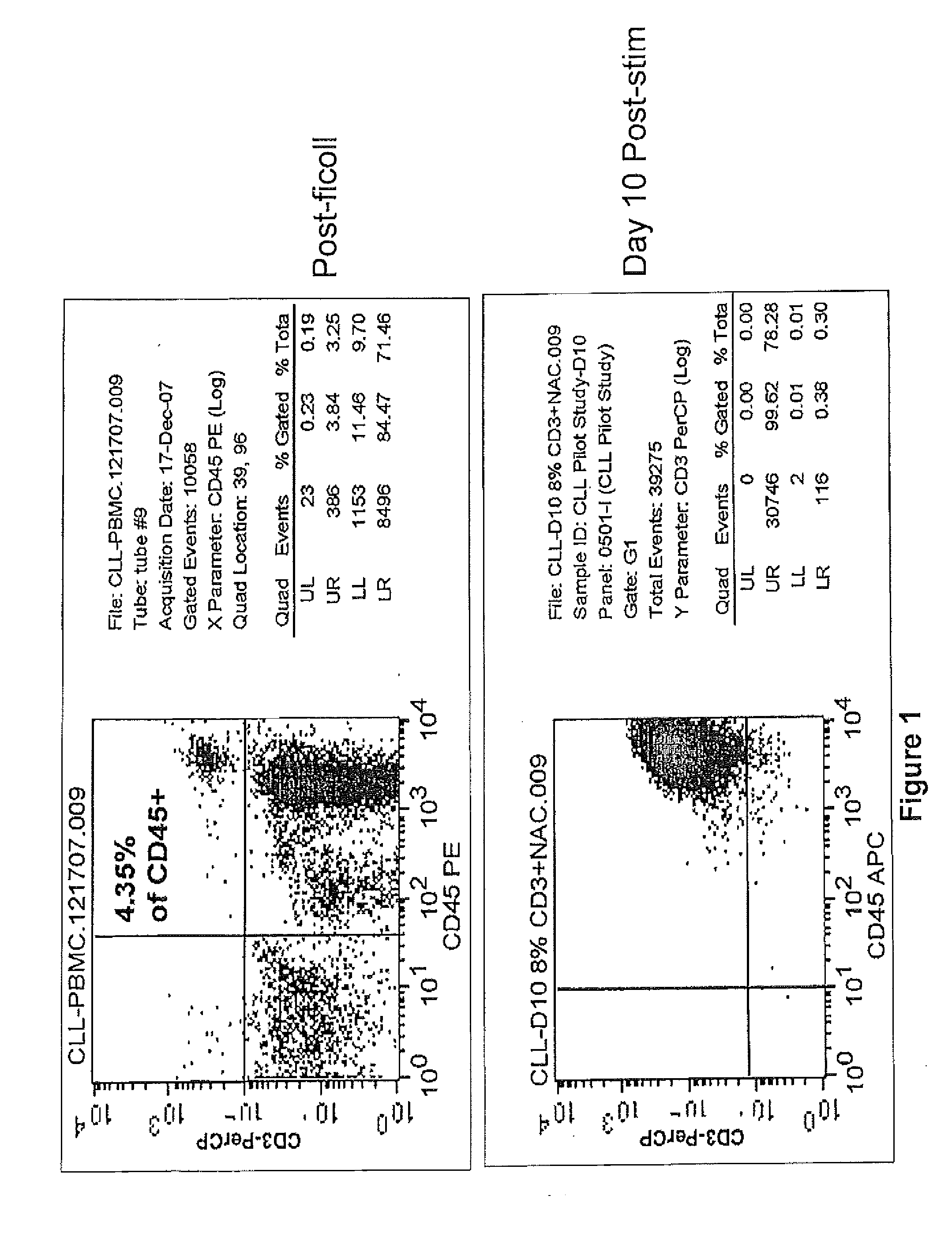Methods for Treating Progressive Multifocal Leukoencephalopathy (PML)
a multi-tumor leukoencephalopathy, progressive technology, applied in the direction of biocide, antibody medical ingredients, drug compositions, etc., can solve the problems of inability to cure, impaired speech, cognitive deterioration, paralysis,
- Summary
- Abstract
- Description
- Claims
- Application Information
AI Technical Summary
Problems solved by technology
Method used
Image
Examples
experimental examples
[0194]The invention is further described in detail by reference to the following experimental examples. These examples are provided for purposes of illustration only, and are not intended to be limiting unless otherwise specified. Thus, the invention should in no way be construed as being limited to the following examples, but rather, should be construed to encompass any and all variations which become evident as a result of the teaching provided herein.
[0195]Without further description, it is believed that one of ordinary skill in the art can, using the preceding description and the following illustrative examples, make and utilize the compounds of the present invention and practice the claimed methods. The following working examples therefore, specifically point out the preferred embodiments of the present invention, and are not to be construed as limiting in any way the remainder of the disclosure.
example 1
Treatment and Resolution of PML with Autologous Lymphocyte Infusion
[0196]A 61-year old male patient was diagnosed with CLL in 1996. Prior therapy included fludarabine, rituximab and cyclophosphamide. The patient relapsed in 2007. In August 2007, the patient presented with brain lesions and hemiparesis diagnostic of PML. Progression was observed by MRI in October 2007.
[0197]An initial 130 ml sample of blood from the patient was received on Dec. 17, 2007 for preclinical evaluation of compassionate use T cell infusion. FIG. 1 shows CD45+ / CD3+ T cells 10 days post stimulation with anti-CD3 / anti-CD28 beads. A compassionate use IND was filed December 2007. Apheresis and T cell manufacturing with anti-CD3 / CD28 beads was carried out in a GMP facility according to established methods, such as those described in U.S. Patent Application Publication No. US20060121005. 1×1010 autologous CD3 / CD28 activated T cells were infused into the patient on Feb. 1, 2008.
[0198]Results: CD4 / CD8 T cell ratio i...
example 2
CD3 / CD28 Beads as Artificial Antigen Presenting Cells (aAPCs) for T Cell Expansion
[0203]Progressive multifocal leukoencephalopathy (PML) is a demyelinating disease caused by the polyomavirus JC (JCV), which occurs in immunosuppressed patients (Koralnik, 2006, Ann. Neurol. 60:162-73). It is a rare disease which results in inflammation of the white matter of the brain in multiple locations and carries with it a poor prognosis. It has been demonstrated that JCV-specific CD8+ CTLs (specific for two A*0201-restricted JCV epitopes, VP1(p36) and VP1(p100)) are associated with a more favorable outcome in patients with PML (Lima et al., 2007, J. Virol. 81:3361-8) and therefore immunotherapeutic approaches aimed at increasing the cellular immune response against JCV may be helpful. Without wishing to be bound by any particular theory, it is believed that CLL patients who are also diagnosed with PML, immune augmentation will be beneficial to control a JC or JC-like virus infection and provides...
PUM
| Property | Measurement | Unit |
|---|---|---|
| Volume | aaaaa | aaaaa |
| Fraction | aaaaa | aaaaa |
| Fraction | aaaaa | aaaaa |
Abstract
Description
Claims
Application Information
 Login to View More
Login to View More - R&D
- Intellectual Property
- Life Sciences
- Materials
- Tech Scout
- Unparalleled Data Quality
- Higher Quality Content
- 60% Fewer Hallucinations
Browse by: Latest US Patents, China's latest patents, Technical Efficacy Thesaurus, Application Domain, Technology Topic, Popular Technical Reports.
© 2025 PatSnap. All rights reserved.Legal|Privacy policy|Modern Slavery Act Transparency Statement|Sitemap|About US| Contact US: help@patsnap.com



